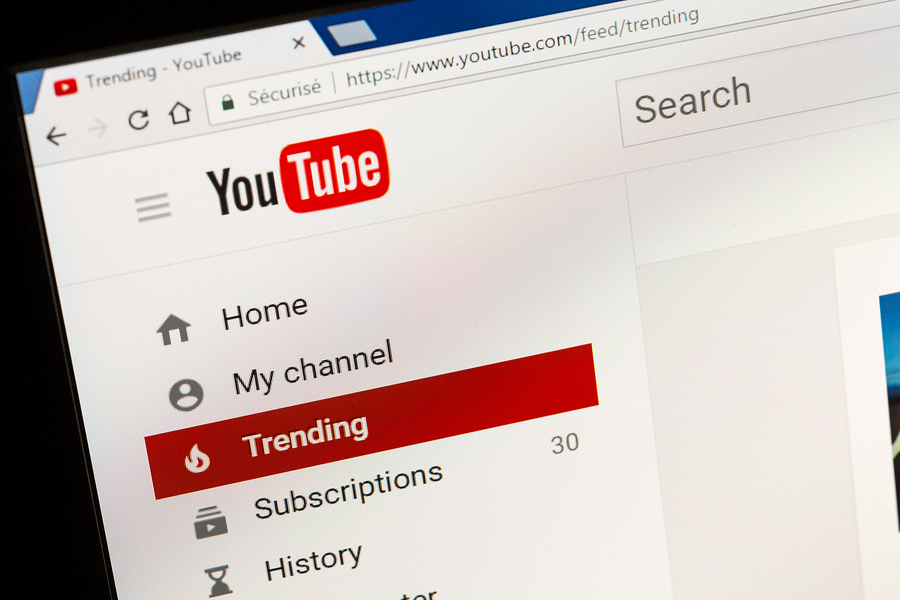 In January 2017, outrage followed the livestreamed suicide 12-year-old Katelyn Nicole Davis posted on Facebook Live of her own final moments as she ended her life at home in a small U.S. town in Georgia. Video and livestream apps by Facebook and YouTube allow anyone to share anything, anytime. Live and unedited.
In January 2017, outrage followed the livestreamed suicide 12-year-old Katelyn Nicole Davis posted on Facebook Live of her own final moments as she ended her life at home in a small U.S. town in Georgia. Video and livestream apps by Facebook and YouTube allow anyone to share anything, anytime. Live and unedited.
John M. Grohol, Psy.D., is the founder and CEO of PsychCentral.com and has been writing about online behavior since 1992. In his article for PsychCentral last January, Grohol pointed out that regardless of attempts to erase Davis’s video from the online world, it was still easily located for viewing. Similarly, wrote Grohol, “Facebook and YouTube could remove such videos (and sometimes do), but copies soon replace them on those same services (or elsewhere online), since people simply upload a copy they’ve saved to their computer.”
Fast forward almost exactly one year and the same anger is now circulating over a YouTube video, ironically on the same subject—suicide.
Logan Paul, a 22-year-old American ‘celebrity’ YouTuber with 15 million subscribers, posted a video on YouTube last Sunday that received millions of views before it was pulled down. In the video, Paul was shown joking with his friends in the notoriously famous Aokigahara Forest, at the foot of Japan’s Mount Fuji. The forest is a well-known “suicide spot” and, while walking there, Paul and his friends came upon a body hanging from a tree, the aftermath of an apparently recent suicide.
In an article for The Guardian, writer Justin McCurry explained that Paul’s video showed the male victim’s body from several angles but with the face blurred. “A member of the group is heard remarking that he ‘doesn’t feel good’”, McCurry added. “Paul replies: ‘What, you never stand next to a dead guy?’ and then laughs.”
Like the public anger vented after young Davis’s suicide posting last year, the criticism of Paul’s treatment of his findings in the Aokigahara Forest abounds. So does the public condemnation of YouTube for the length of time the video was available to view.
Paul later took to Twitter to post a written apology, and a day later made a video telling his audiences his disgraced posting was not done “for views”, but to “raise awareness for suicide and suicide prevention.” YouTube said Paul’s video violated its policies, but did not respond to calls to suspend him from the site,” wrote McCurry.
YouTube’s website explains in its policies for reporting inappropriate content that it relies on its viewing members to “flag content that they find inappropriate”. It also cautions that although YouTube staff review flagged material around the clock, “when something is flagged, it’s not automatically taken down.”
John Grohol’s response, in last year’s PsychCentral article, to public outrage at social media’s failings—can again apply to this year’s example. “This is upsetting to people,” Grohol wrote. “But the outrage misses the point completely.”
It is Grohol’s opinion that the public outcry is misdirected. “Outrage shouldn’t fall on the fact that our technology and tools allow such videos to be produced and distributed so easily,” he explained. “You can’t stop the inevitable progress of technology, nor regulate how people will use it.”
Grohol called on the public to stop pointing fingers at myriad social media sites like YouTube, Facebook Live, Instagram, and Twitter. “The problem is suicide,” he explained. “The problem is a society that has so few social resources available . . . that a 12-year-old feels her only choice is to end her own life.” Or, for an unidentified male, to hang himself from a tree.
While social media technology has continued to evolve, Grohol argues, services for people in crisis situations like suicide are outdated. “We don’t have state-of-the-art interventions for people contemplating suicide,” he wrote last year. Instead we mostly rely on the same efforts and technologies--like the telephone!--that we’ve relegated suicidal people to for decades.”
And options to text crisis lines or use mental health apps are only band-aid solutions that Grohol feels do nothing to improve the situations for people in crisis.
Like Grohol, mental health professionals in Japan are trying to turn the location of Paul’s questionable video into a positive resource for people in crisis. Also known as the Sea of Trees, the Aokigahara Forest is located two-hours west of Tokyo.
In an article yesterday for CNN.com, writer Michael Nedelman explained: “At the entrance of the forest, a sign reminds visitors that "life is a precious gift from their parents.” Written in Japanese, the sign also says: "Quietly think once more about your parents, siblings or children. Please don't suffer alone, and first reach out."
In McCurry’s article for The Guardian, he added that “in an attempt to reduce the area’s association with suicide”, police no longer publicize annual death statistics. And while the country’s suicide rates have dropped in the last few years to just below 30,00 per year, “the lack of services for people with mental health problems, as well as debt and serious illness . . . have also been cited as common causes of suicide in Japan".
Grohol’s message remains timeless then: “let’s stop being outraged that such videos exist.” Instead, he suggested focusing public outrage “on the lack of accessible services to individuals who suffer from depression and other mental illness who sincerely believe that ending their own life is the best available option”.
References
Grohol, J.M., Psy.D., (January 24, 2017). PsychCentral.com. Outrage Over Katelyn Nicole Davis Video Suicide Misses the Point. https://psychcentral.com/blog/archives/2017/01/24/outrage-over-katelyn-nicole-davis-video-suicide-misses-the-point/
McCurry, J., (January 2, 2018). The Guardian. https://www.theguardian.com/world/2018/jan/02/outcry-as-youtube-star-posts-video-of-dead-body-in-japan
Nedelman, M., (January 3, 2018). CNN.com. Inside Japan’s ‘suicide forest’. http://www.cnn.com/2018/01/03/health/japan-suicide-forest-intl/index.html
YouTube., (Retrieved January 3, 2018). Policies and Safety. www.YouTube.com